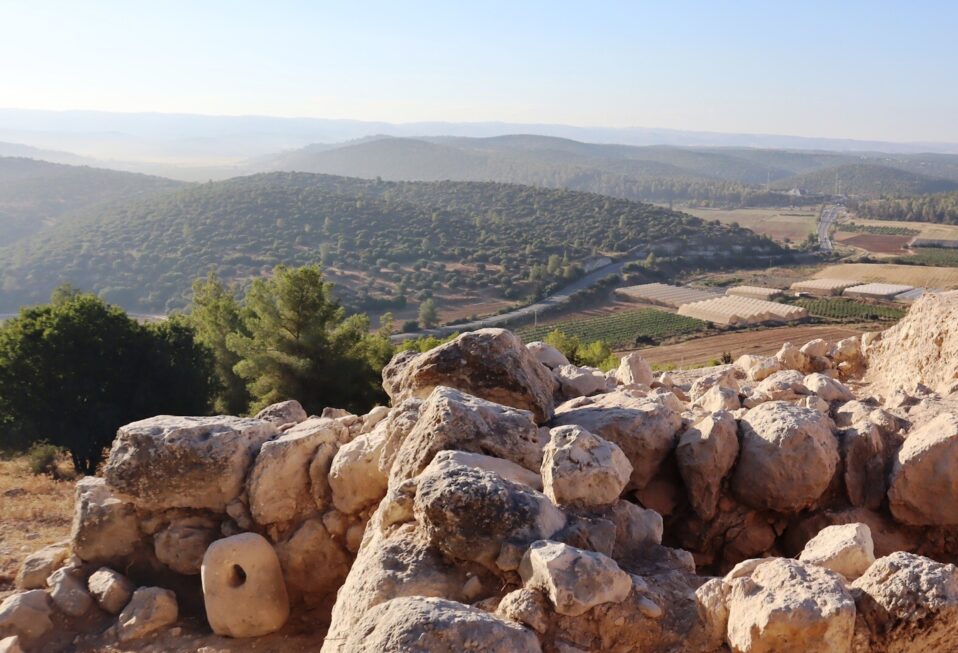Azekah sits on a high ridge in the Judean lowlands overlooking the Elah Valley. Along with Socoh and Sha’arayim, Azekah is featured in the story of David’s confrontation with Goliath (1 Samuel 17). Its location within the Judean lowlands in the Elah Valley meant that it functioned as a guard city between the Judean highlands and the Coastal Plain.
Azekah first appears in the Bible in the story of the five Amorite kings defeated by Joshua at Gibeon (Joshua 10:10-11). According to 1 Samuel 17, the Philistines encamped between Socoh and Azekah. When the kingdom of Israel divided into the northern kingdom of Israel and the southern kingdom of Judah, Rehoboam, the son of Solomon, king of Judah, fortified Azekah along with other sites in the Judean lowlands to protect his kingdom (2 Chronicles 11:9).
Assyrian sources refer to Azekah as aa “stronghold, which is situated in the mid[st of the mountains…] located on a mountain ridge like a pointed dagger.” The Babylonian campaign against Judah in the 6th century B.C. destroyed Azekah along with many cities in the Judean lowlands, and also Jerusalem. The book of Jeremiah remembers a time just before the destruction of Jerusalem when the only cities left to the kingdom of Judah were Jerusalem, Azekah, and Lachish (Jeremiah 34:7).
A letter discovered in the excavations at Lachish, written on a broken piece of pottery (ostracon), attests to this reality. The person writing notes that those at Lachish could no longer see the signal fires of Azekah; the Babylonians had destroyed the city. Azekah fell to the Babylonians in 588 B.C., shortly before Jerusalem fell. When people returned to Judah, under the Persians, some settled at Azekah (Nehemiah 11:30).
Excavations at Lachish have revealed settlement from around 1500 B.C. to the Byzantine period. Evidence of the Babylonian destruction of the city has been uncovered. So too, a fortress, which some archaeologists identified as the fortifications of Rehoboam have been unearthed. Stamped jar handles with the seal lemelek (“belonging to the king”) from the time of king Hezekiah at the end of the 8th century B.C. were discovered, as were some Egyptian scarabs.
Marc Turnage is President/CEO of Biblical Expeditions. He is an authority on ancient Judaism and Christian origins. He has published widely for both academic and popular audiences. His most recent book, Windows into the Bible, was named by Outreach Magazine as one of its top 100 Christian living resources. Marc is a widely sought-after speaker and a gifted teacher. He has been guiding groups to the lands of the Bible—Israel, Jordan, Egypt, Turkey, Greece, and Italy—for over twenty years.
Website: WITBUniversity.com
Facebook: @witbuniversity
Podcast: Windows into the Bible Podcast




Post a comment